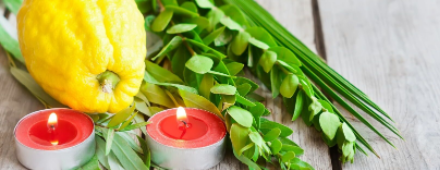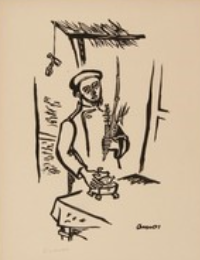Why the Sukkah?
Sukkot is a week-long festival celebrating the ingathering harvest of the season and remembering God's miraculous presence with the children of Israel when they left Egypt-but that is only the beginning.
Sukkot is celebrated in sukkahs, temporary dwellings covered with the branches of trees-a sign of God's gifts from the earth in the season of ingathering. Yet, there is a deeper, holier reasoning behind its use…
It represents the years of wandering in the desert, when both the Jewish people, and the Tabernacle of God, had only temporary dwellings. It represents God setting His people free from the bonds of Egypt and keeping them safe and fed in the desert, even as they resided in sukkahs. It represents His Presence-His Glory-which hovered over the 'Tabernacle of Meeting' in a cloud by day and fire by night. It represents the Lord's Presence and Glory leading the people of Israel with the sign of His cloud ascending from the Tabernacle to the place He would direct them. To their promised land.
Following the Cloud:
"Then the cloud covered the tabernacle of meeting, and the glory of the Lord filled the tabernacle. And Moses was not able to enter the tabernacle of meeting, because the cloud rested above it, and the glory of the Lord filled the tabernacle. Whenever the cloud was taken up from above the tabernacle, the children of Israel would go onward in all their journeys. But if the cloud was not taken up, then they did not journey till the day that it was taken up. For the cloud of the Lord was above the tabernacle by day, and fire was over it by night, in the sight of all the house of Israel, throughout all their journeys."
-Exodus 40:34-38
The cloud is both God's Presence and His Glory. The people of Israel followed after God-they observed the signs of His Presence and Glory and followed after it.
Moses said to the Lord in Exodus 33:15, "If Your Presence does not go with us, do not bring us up from here." We, too, must not only desire God's Presence and Glory, we must know they are required for us to go forward-to move into the next season and go higher.
Sukkot, therefore, is a celebration that God did not allow His Presence and Glory to depart from His people as they traveled through the desert-that He led them, moved with them, and dwelt amongst them.
Today, on Sukkot, God's Presence and Glory is celebrated and reveled in by His people-that is why Sukkot is filled with such joy. Whenever the Glory of the Lord and His Presence are truly with His people, there is little in the way of physical discomfort that can dishearten-for the joy of the Lord is our strength! The Jewish people on Sukkot look back at God's Presence and Glory in the desert and today with hearts that are filled with rejoicing. Rejoicing that continues no matter the circumstance. No matter the weather.
They prepare for months for this season, for this stepping into the Presence and Glory of their creator as purpose and action become one.
They know the value of their God.
Sukkot Symbols Found in Archaeology and History:
Sukkot symbols are perhaps the most recognizable and unique symbols of Jewish holidays found in the archaeological and historic records. For instance, the 'four species' can be found on coins, mosaics, and other artifacts throughout the centuries in Israel and around the world-wherever God's people have traversed.
While sometimes found separately, the citron and other symbols of Sukkot are common and highly cherished within the Jewish community-as can be seen by their extensive use. Further, when the four are combined they are only tied directly to Sukkot. Yet, even when depicted separately, they show us the importance of Sukkot.
Even the Holocaust could not stop their depiction or use-though it did bring extensive challenges and danger. One beautiful example of Sukkot symbol usage during that time is that shown BELOW. This pictured lithocut from 1940, illustrated by a Jewish man, Imre Amos, who sadly perished while in the Ohrdruf, Germany concentration camp only four years later.
(Credit: USHMM.org, Artist: Imre Amos. Lithocut published in 1940. Depicts
Sukkot celebration-Jewish man in a sukkah holding the 'four species,'
citron in one hand and the palm, myrtle, and willow in the other.)





